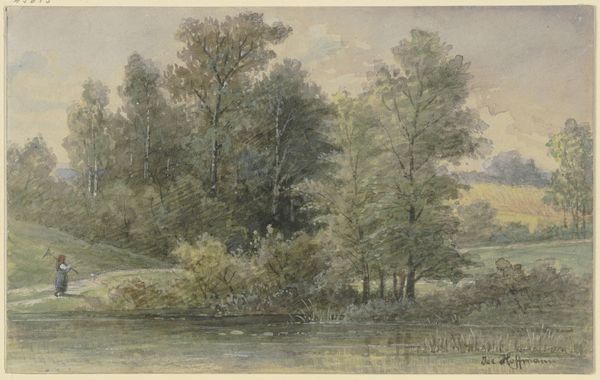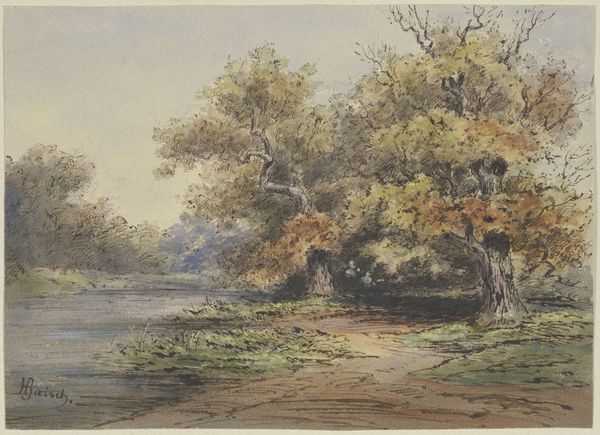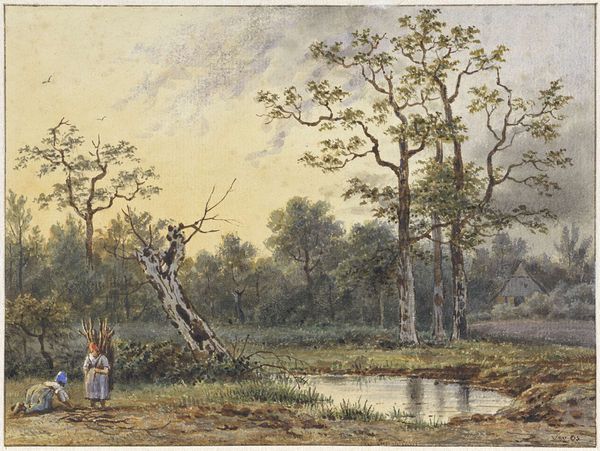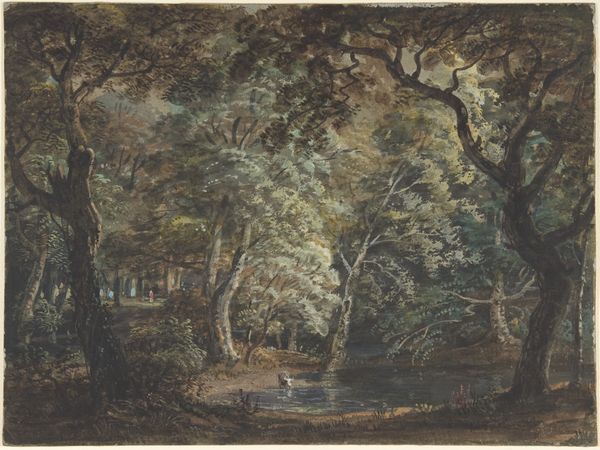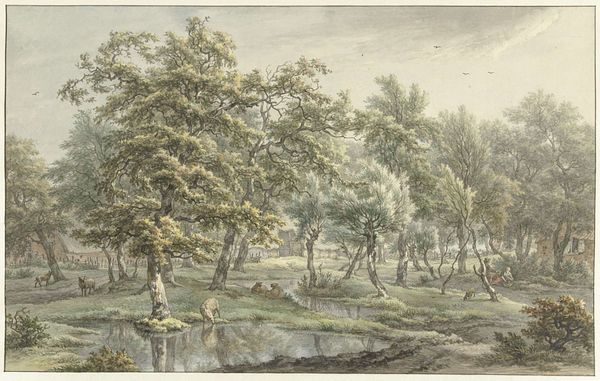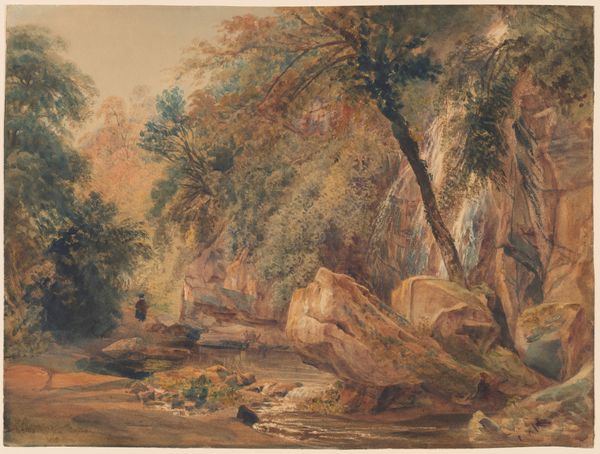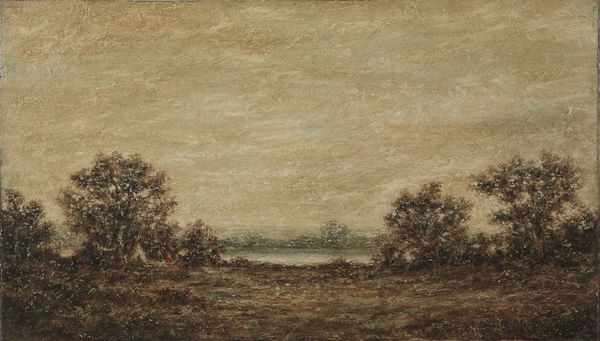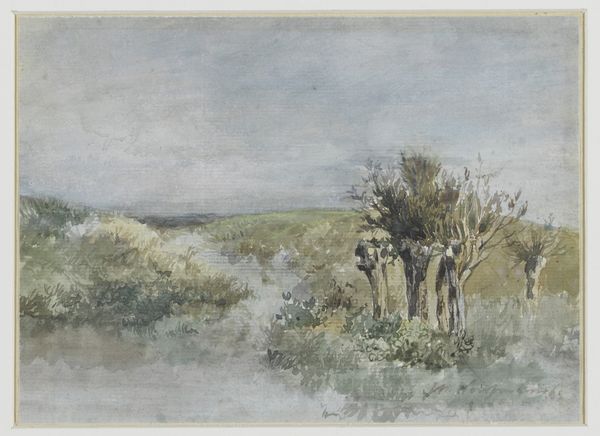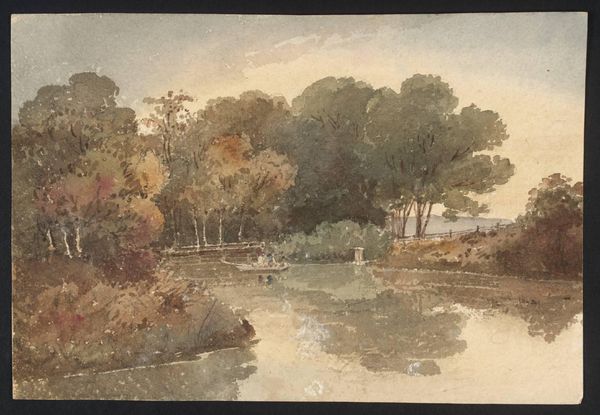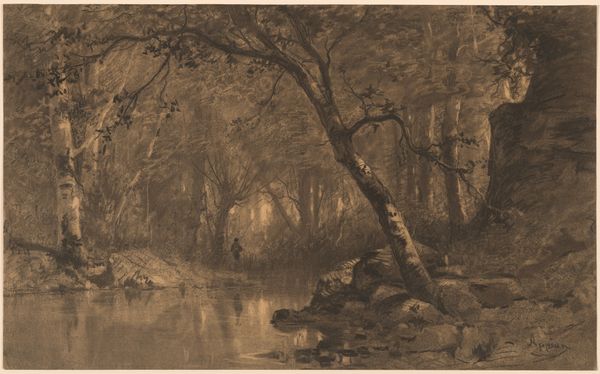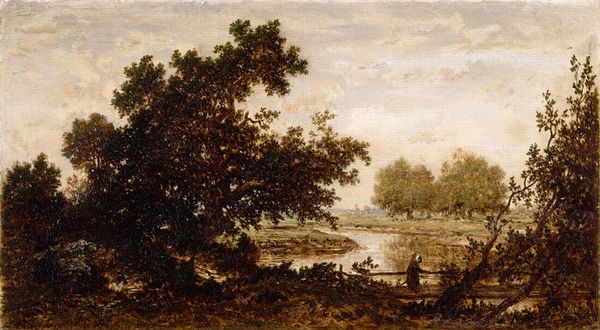
Watertje onder bomen aan het einde van een bos Possibly 1835 - 1877
0:00
0:00
Dimensions: height 371 mm, width 549 mm
Copyright: Rijks Museum: Open Domain
Jan Willem van Borselen made this watercolor of a small body of water under trees at the edge of a forest. The artwork reflects the 19th-century Dutch interest in landscape art and the Romantic movement's focus on nature. Van Borselen lived and worked during a time when the Netherlands was experiencing significant social and economic changes. The country was transitioning from an agrarian society to a more industrialized one, leading to urbanization and a growing middle class. This artwork captures the tranquil beauty of the Dutch countryside, offering viewers an escape from the rapidly changing urban landscape. The attention to detail in the trees and water suggests a deep appreciation for the natural world. To understand this artwork better, we can research the artistic conventions of the time and the social context in which it was created. By doing so, we can gain a deeper understanding of its meaning and significance.
Comments
No comments
Be the first to comment and join the conversation on the ultimate creative platform.
